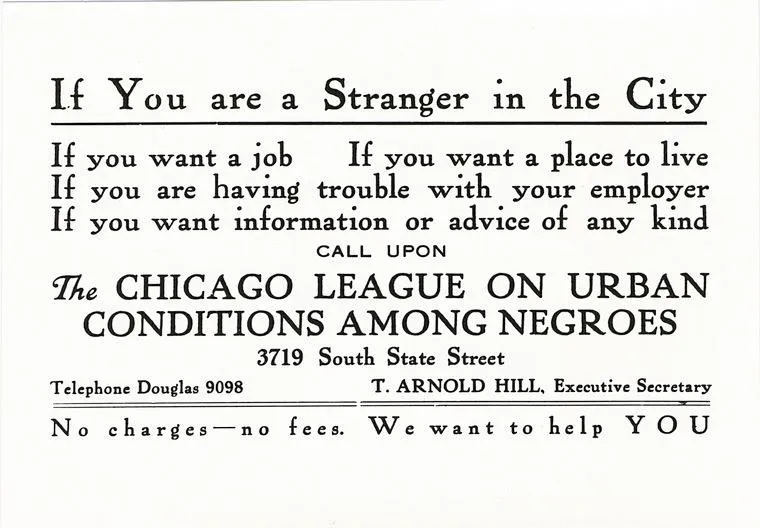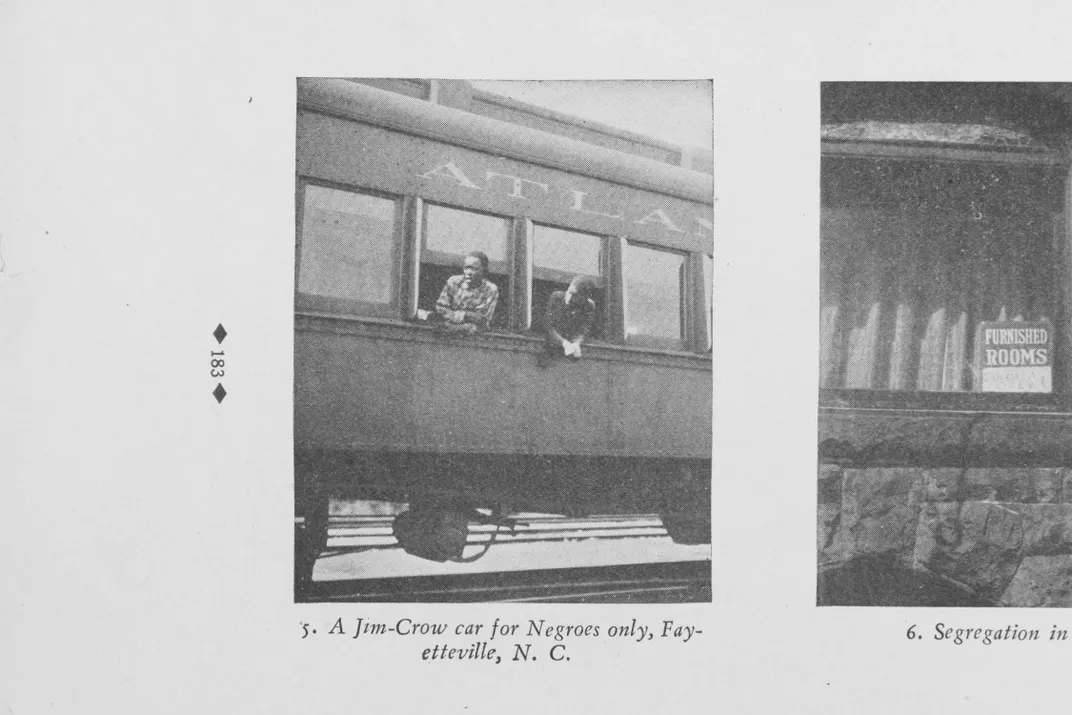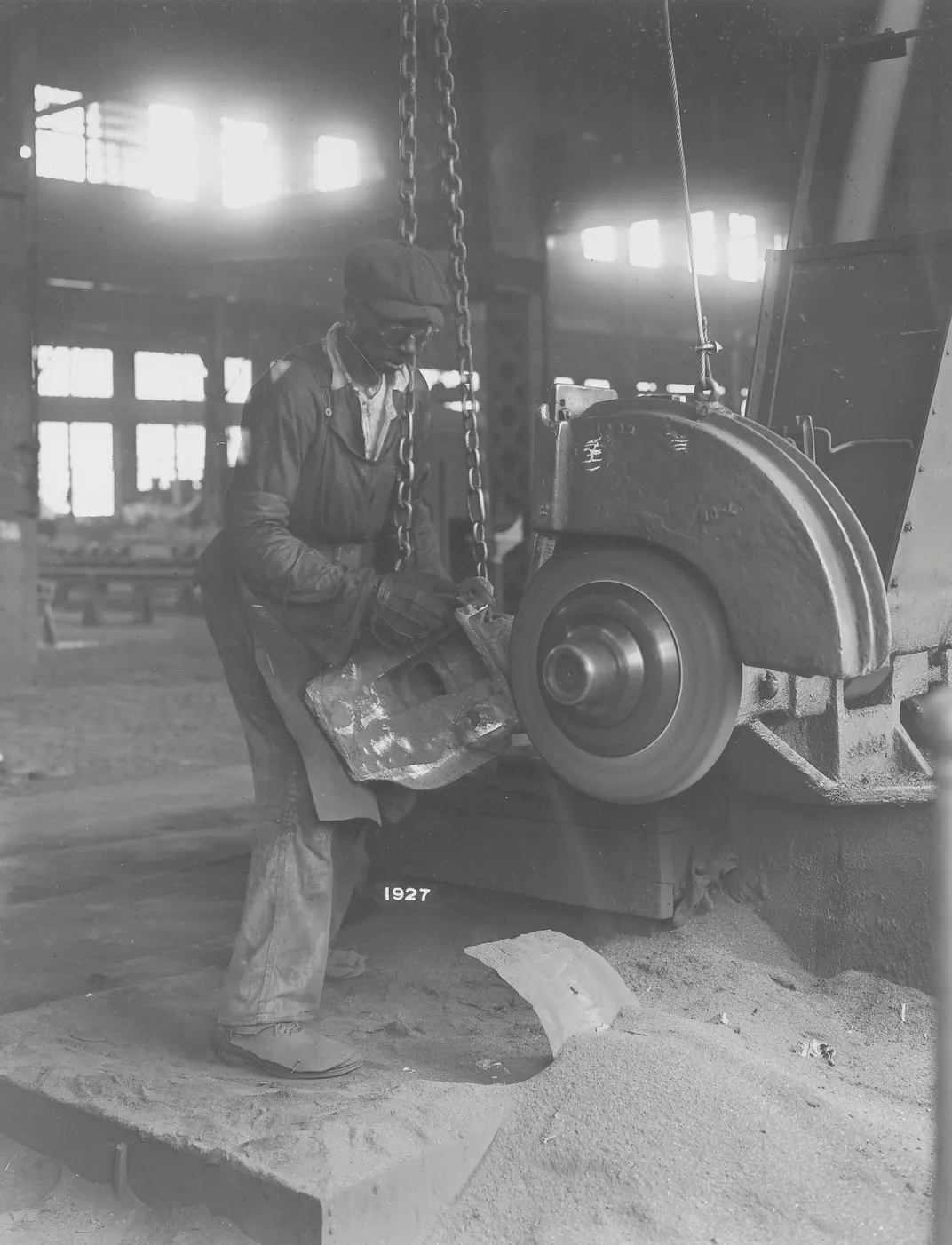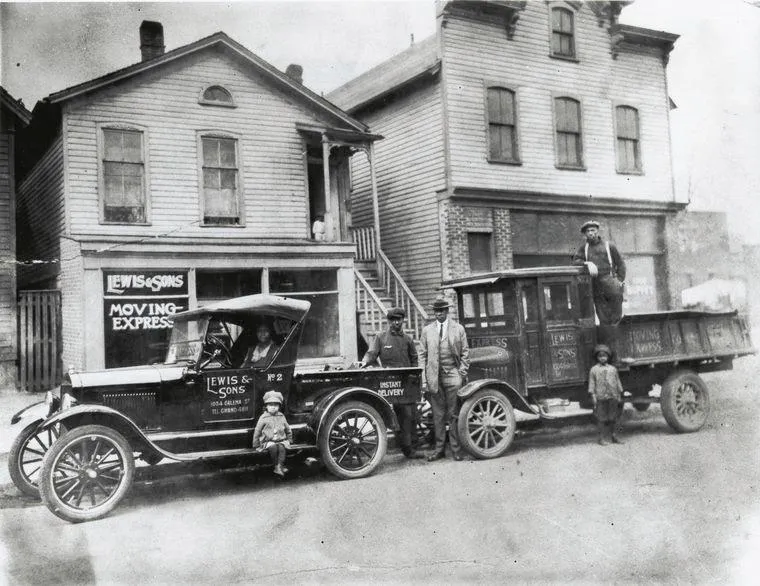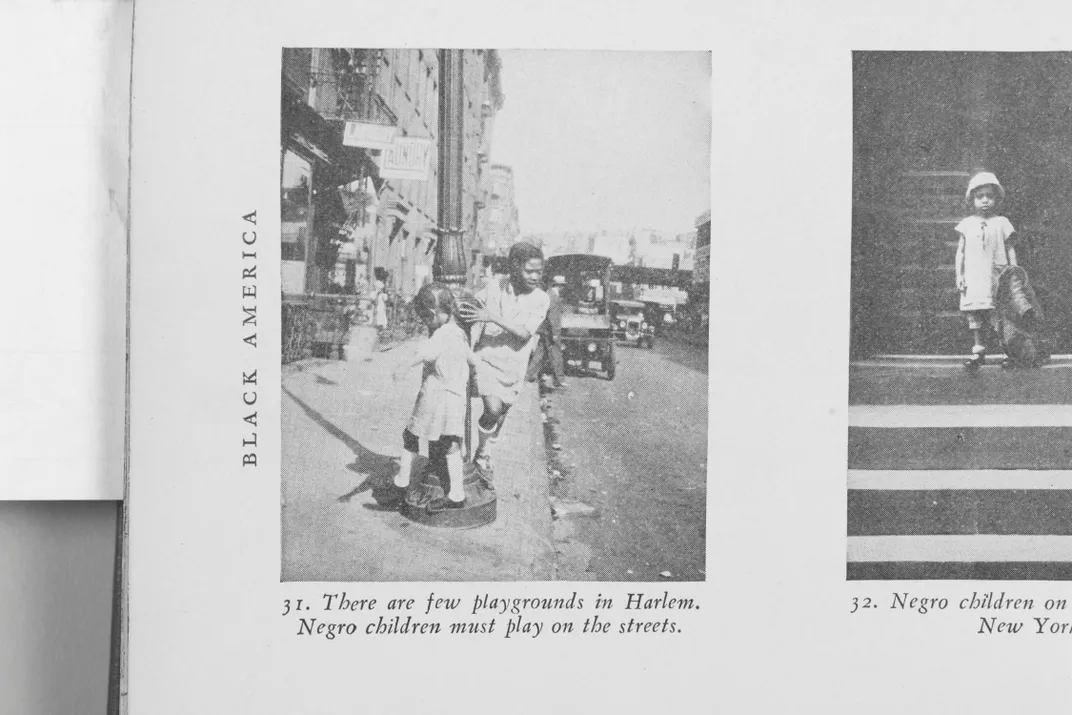The Long-Lasting Legacy of the Great Migration
When millions of African-Americans fled the South in search of a better life, they remade the nation in ways that are still being felt
:focal(2416x1089:2417x1090)/https://tf-cmsv2-smithsonianmag-media.s3.amazonaws.com/filer/42/96/42964a6d-02b7-465e-a4f5-6a650bbc83fb/sep2016_c02_migration.jpg)
In 1963, the American mathematician Edward Lorenz, taking a measure of the earth’s atmosphere in a laboratory that would seem far removed from the social upheavals of the time, set forth the theory that a single “flap of a sea gull’s wings” could redirect the path of a tornado on another continent, that it could, in fact, be “enough to alter the course of the weather forever,” and that, though the theory was then new and untested, “the most recent evidence would seem to favor the sea gulls.”
At that moment in American history, the country had reached a turning point in a fight for racial justice that had been building for decades. This was the year of the killing of Medgar Evers in Mississippi, of the bombing of the 16th Street Baptist Church in Birmingham, of Gov. George Wallace blocking black students at the schoolhouse door of the University of Alabama, the year of the March on Washington, of Martin Luther King Jr.’s “I Have a Dream” speech and his “Letter From a Birmingham Jail.” By then, millions of African-Americans had already testified with their bodies to the repression they had endured in the Jim Crow South by defecting to the North and West in what came to be known as the Great Migration. They were fleeing a world where they were restricted to the most menial of jobs, underpaid if paid at all, and frequently barred from voting. Between 1880 and 1950, an African-American was lynched more than once a week for some perceived breach of the racial hierarchy.
“They left as though they were fleeing some curse,” wrote the scholar Emmett J. Scott, an observer of the early years of the migration. “They were willing to make almost any sacrifice to obtain a railroad ticket and they left with the intention of staying.”
The migration began, like the flap of a sea gull’s wings, as a rivulet of black families escaping Selma, Alabama, in the winter of 1916. Their quiet departure was scarcely noticed except for a single paragraph in the Chicago Defender, to whom they confided that “the treatment doesn’t warrant staying.” The rivulet would become rapids, which grew into a flood of six million people journeying out of the South over the course of six decades. They were seeking political asylum within the borders of their own country, not unlike refugees in other parts of the world fleeing famine, war and pestilence.
Until that moment and from the time of their arrival on these shores, the vast majority of African-Americans had been confined to the South, at the bottom of a feudal social order, at the mercy of slaveholders and their descendants and often-violent vigilantes. The Great Migration was the first big step that the nation’s servant class ever took without asking.
“Oftentimes, just to go away is one of the most aggressive things that another person can do,” wrote John Dollard, an anthropologist studying the racial caste system of the South in the 1930s, “and if the means of expressing discontent are limited, as in this case, it is one of the few ways in which pressure can be put on.”
The refugees could not know what was in store for them and for their descendants at their destinations or what effect their exodus would have on the country. But by their actions, they would reshape the social and political geography of every city they fled to. When the migration began, 90 percent of all African-Americans were living in the South. By the time it was over, in the 1970s, 47 percent of all African-Americans were living in the North and West. A rural people had become urban, and a Southern people had spread themselves all over the nation.
Merely by leaving, African-Americans would get to participate in democracy and, by their presence, force the North to pay attention to the injustices in the South and the increasingly organized fight against those injustices. By leaving, they would change the course of their lives and those of their children. They would become Richard Wright the novelist instead of Richard Wright the sharecropper. They would become John Coltrane, jazz musician instead of tailor; Bill Russell, NBA pioneer instead of paper mill worker; Zora Neale Hurston, beloved folklorist instead of maidservant. The children of the Great Migration would reshape professions that, had their families not left, may never have been open to them, from sports and music to literature and art: Miles Davis, Ralph Ellison, Toni Morrison, August Wilson, Jacob Lawrence, Diana Ross, Tupac Shakur, Prince, Michael Jackson, Shonda Rhimes, Venus and Serena Williams and countless others. The people who migrated would become the forebears of most African-Americans born in the North and West.
The Great Migration would expose the racial divisions and disparities that in many ways continue to plague the nation and dominate headlines today, from police killings of unarmed African-Americans to mass incarceration to widely documented biases in employment, housing, health care and education. Indeed, two of the most tragically recognizable descendants of the Great Migration are Emmett Till, a 14-year-old Chicago boy killed in Mississippi in 1955, and Tamir Rice, a 12-year-old Cleveland boy shot to death by police in 2014 in the city where his ancestors had fled. Their fates are a reminder that the perils the people sought to escape were not confined to the South, nor to the past.
The history of African-Americans is often distilled into two epochs: the 246 years of enslavement ending after the close of the Civil War, and the dramatic era of protest during the civil rights movement. Yet the Civil War-to-civil rights axis tempts us to leap past a century of resistance against subjugation, and to miss the human story of ordinary people, their hopes lifted by Emancipation, dashed at the end of Reconstruction, crushed further by Jim Crow, only to be finally, at long last, revived when they found the courage within themselves to break free.
/https://tf-cmsv2-smithsonianmag-media.s3.amazonaws.com/filer/35/9a/359a8ce6-6c1b-46d1-90c6-51d206d91295/sep2016_c06_migration.jpg)
**********
A little boy boarded a northbound train with his grandmother and extended family, along with their upright piano and the rest of their worldly possessions, stuffed inside wooden crates, to begin their journey out of Mississippi. It was 1935. They were packed into the Jim Crow car, which, by custom, was at the front of the train, the first to absorb the impact in the event of a collision. They would not be permitted into the dining car, so they carried fried chicken and boiled eggs to tide them over for the journey.
The little boy was 4 years old and anxious. He’d overheard the grown-ups talking about leaving their farm in Arkabutla, to start over up north. He heard them say they might leave him with his father’s people, whom he didn’t know. In the end they took him along. The near abandonment haunted him. He missed his mother, who would not be joining them on this journey; she was away trying to make a stable life for herself after the breakup with his father. He did not know when he would see her again.
His grandfather had preceded them north. He was a hardworking, serious man who kept the indignities he suffered under Jim Crow to himself. In Mississippi, he had not dared stand up to some white children who broke the family’s wagon. He told the little boy that as black people, they had no say in that world. “There were things they could do that we couldn’t,” the boy would say of the white children when he was a grown man with gray hair and a son of his own.
The grandfather was so determined to get his family out of the South that he bought a plot of land sight unseen in a place called Michigan. On the trip north, the little boy and his cousins and uncles and aunts (who were children themselves) did not quite know what Michigan was, so they made a ditty out of it and sang it as they waited for the train. “Meatskin! Meatskin! We’re going to Meatskin!”
They landed on freer soil, but between the fears of abandonment and the trauma of being uprooted from his mother, the little boy arrived with a stutter. He began to speak less and less. At Sunday school, the children bellowed with laughter whenever he tried. So instead, he talked to the hogs and cows and chickens on the farm, who, he said years later, “don’t care how you sound.”
The little boy went mute for eight years. He wrote down the answers to questions he was asked, fearing even to introduce himself to strangers, until a high school English teacher coaxed him out of his silence by having him read poetry aloud to the class. That boy was James Earl Jones. He would go on to the University of Michigan, where he abandoned pre-med for theater. Later he would play King Lear in Central Park and Othello on Broadway, win Tony Awards for his performances in Fences and in The Great White Hope and star in films like Dr. Strangelove, Roots, Field of Dreams and Coming to America.
The voice that fell silent for so long would become among the most iconic of our time—the voice of Darth Vader in Star Wars, of Mufasa in The Lion King, the voice of CNN. Jones lost his voice, and found it, because of the Great Migration. “It was responsible for all that I am grateful for in my life,” he told me in a recent interview in New York. “We were reaching for our gold mines, our freedom.”
**********
The desire to be free is, of course, human and universal. In America, enslaved people had tried to escape through the Underground Railroad. Later, once freed on paper, thousands more, known as Exodusters, fled the violent white backlash following Reconstruction in a short-lived migration to Kansas in 1879.
But concentrated in the South as they were, held captive by the virtual slavery of sharecropping and debt peonage and isolated from the rest of the country in the era before airlines and interstates, many African-Americans had no ready means of making a go of it in what were then faraway alien lands.
By the opening of the 20th century, the optimism of the Reconstruction era had long turned into the terror of Jim Crow. In 1902, one black woman in Alabama seemed to speak for the agitated hearts that would ultimately propel the coming migration: “In our homes, in our churches, wherever two or three are gathered together,” she said, “there is a discussion of what is best to do. Must we remain in the South or go elsewhere? Where can we go to feel that security which other people feel? Is it best to go in great numbers or only in several families? These and many other things are discussed over and over.”
The door of escape opened during World War I, when slowing immigration from Europe created a labor shortage in the North. To fill the assembly lines, companies began recruiting black Southerners to work the steel mills, railroads and factories. Resistance in the South to the loss of its cheap black labor meant that recruiters often had to act in secret or face fines and imprisonment. In Macon, Georgia, for example, a recruiter’s license required a $25,000 fee plus the unlikely recommendations of 25 local businessmen, ten ministers and ten manufacturers. But word soon spread among black Southerners that the North had opened up, and people began devising ways to get out on their own.
Southern authorities then tried to keep African-Americans from leaving by arresting them at the railroad platforms on grounds of “vagrancy” or tearing up their tickets in scenes that presaged tragically thwarted escapes from behind the Iron Curtain during the Cold War. And still they left.
On one of the early trains out of the South was a sharecropper named Mallie Robinson, whose husband had left her to care for their young family under the rule of a harsh plantation owner in Cairo, Georgia. In 1920, she gathered up her five children, including a baby still in diapers, and, with her sister and brother-in-law and their children and three friends, boarded a Jim Crow train, and another, and another, and didn’t get off until they reached California.
They settled in Pasadena. When the family moved into an all-white neighborhood, a cross was burned on their front lawn. But here Mallie’s children would go to integrated schools for the full year instead of segregated classrooms in between laborious hours chopping and picking cotton. The youngest, the one she had carried in her arms on the train out of Georgia, was named Jackie, who would go on to earn four letters in athletics in a single year at UCLA. Later, in 1947, he became the first African-American to play Major League Baseball.
Had Mallie not persevered in the face of hostility, raising a family of six alone in the new world she had traveled to, we might not have ever known his name. “My mother never lost her composure,” Jackie Robinson once recalled. “As I grew older, I often thought about the courage it took for my mother to break away from the South.”
/https://tf-cmsv2-smithsonianmag-media.s3.amazonaws.com/filer/12/ba/12ba7fd7-b0a4-4a57-884f-475ebc4db34c/sep2016_c04_migration.jpg)
Mallie was extraordinary in another way. Most people, when they left the South, followed three main tributaries: the first was up the East Coast from Florida, Georgia, the Carolinas and Virginia to Washington, D.C., Baltimore, Philadelphia, New York and Boston; the second, up the country’s central spine, from Alabama, Mississippi, Tennessee and Arkansas to St. Louis, Chicago, Cleveland, Detroit and the entire Midwest; the third, from Louisiana and Texas to California and the Western states. But Mallie took one of the farthest routes in the continental U.S. to get to freedom, a westward journey of more than 2,200 miles.
The trains that spirited the people away, and set the course for those who would come by bus or car or foot, acquired names and legends of their own. Perhaps the most celebrated were those that rumbled along the Illinois Central Railroad, for which Abraham Lincoln had worked as a lawyer before his election to the White House, and from which Pullman porters distributed copies of the Chicago Defender in secret to black Southerners hungry for information about the North. The Illinois Central was the main route for those fleeing Mississippi for Chicago, people like Muddy Waters, the blues legend who made the journey in 1943 and whose music helped define the genre and pave the way for rock ’n’ roll, and Richard Wright, a sharecropper’s son from Natchez, Mississippi, who got on a train in 1927 at the age of 19 to feel what he called “the warmth of other suns.”
In Chicago, Wright worked washing dishes and sweeping streets before landing a job at the post office and pursuing his dream as a writer. He began to visit the library: a right and pleasure that would have been unthinkable in his home state of Mississippi. In 1940, having made it to New York, he published Native Son to national acclaim, and, through this and other works, became a kind of poet laureate of the Great Migration. He seemed never to have forgotten the heartbreak of leaving his homeland and the courage he mustered to step into the unknown. “We look up at the high Southern sky,” Wright wrote in 12 Million Black Voices. “We scan the kind, black faces we have looked upon since we first saw the light of day, and, though pain is in our hearts, we are leaving.”
Zora Neale Hurston arrived in the North along the East Coast stream from Florida, although, as was her way, she broke convention in how she got there. She had grown up as the willful younger daughter of an exacting preacher and his long-suffering wife in the all-black town of Eatonville. After her mother died, when she was 13, Hurston bounced between siblings and neighbors until she was hired as a maid with a traveling theater troupe that got her north, dropping her off in Baltimore in 1917. From there, she made her way to Howard University in Washington, where she got her first story published in the literary magazine Stylus while working odd jobs as a waitress, maid and manicurist.
She continued on to New York in 1925 with $1.50 to her name. She would become the first black student known to graduate from Barnard College. There, she majored in English and studied anthropology, but was barred from living in the dormitories. She never complained. In her landmark 1928 essay “How It Feels to Be Colored Me,” she mocked the absurdity: “Sometimes, I feel discriminated against, but it does not make me angry,” she wrote. “It merely astonishes me. How can any deny themselves the pleasure of my company? It’s beyond me.”
She arrived in New York when the Harlem Renaissance, an artistic and cultural flowering in the early years of the Great Migration, was in full bloom. The influx to the New York region would extend well beyond the Harlem Renaissance and draw the parents or grandparents of, among so many others, Denzel Washington (Virginia and Georgia), Ella Fitzgerald (Newport News, Virginia), the artist Romare Bearden (Charlotte, North Carolina), Whitney Houston (Blakeley, Georgia), the rapper Tupac Shakur (Lumberton, North Carolina), Sarah Vaughan (Virginia) and Althea Gibson (Clarendon County, South Carolina), the tennis champion who, in 1957, became the first black player to win at Wimbledon.
From Aiken, South Carolina, and Bladenboro, North Carolina, the migration drew the parents of Diahann Carroll, who would become the first black woman to win a Tony Award for best actress and, in 1968, to star in her own television show in a role other than a domestic. It was in New York that the mother of Jacob Lawrence settled after a winding journey from Virginia to Atlantic City to Philadelphia and then on to Harlem. Once there, to keep teenage Jacob safe from the streets, she enrolled her eldest son in an after-school arts program that would set the course of his life.
Lawrence would go on to create “The Migration Series”—60 painted panels, brightly colored like the throw rugs his mother kept in their tenement apartment. The paintings would become not only the best-known images of the Great Migration but among the most recognizable images of African-Americans in the 20th century.
/https://tf-cmsv2-smithsonianmag-media.s3.amazonaws.com/filer/5b/4a/5b4a1d92-ddf6-40a5-adac-040af2eaea8b/sep2016_c03_migration.jpg)
**********
Yet throughout the migration, wherever black Southerners went, the hostility and hierarchies that fed the Southern caste system seemed to carry over into the receiving stations in the New World, as the cities of the North and West erected barriers to black mobility. There were “sundown towns” throughout the country that banned African-Americans after dark. The constitution of Oregon explicitly prohibited black people from entering the state until 1926; whites-only signs could still be seen in store windows into the 1950s.
Even in the places where they were permitted, blacks were relegated to the lowest-paying, most dangerous jobs, barred from many unions and, at some companies, hired only as strike breakers, which served to further divide black workers from white. They were confined to the most dilapidated housing in the least desirable sections of the cities to which they fled. In densely populated destinations like Pittsburgh and Harlem, housing was so scarce that some black workers had to share the same single bed in shifts.
When African-Americans sought to move their families to more favorable conditions, they faced a hardening structure of policies and customs designed to maintain racial exclusion. Restrictive covenants, introduced as a response to the influx of black people during the Great Migration, were clauses written into deeds that outlawed African-Americans from buying, leasing or living in properties in white neighborhoods, with the exception, often explicitly spelled out, of servants. By the 1920s, the widespread use of restrictive covenants kept as much as 85 percent of Chicago off-limits to African-Americans.
At the same time, redlining—the federal housing policy of refusing to approve or guarantee mortgages in areas where black people lived—served to deny them access to mortgages in their own neighborhoods. These policies became the pillars of a residential caste system in the North that calcified segregation and wealth inequality over generations, denying African-Americans the chance accorded other Americans to improve their lot.
In the 1930s, a black couple in Chicago named Carl and Nannie Hansberry decided to fight these restrictions to make a better life for themselves and their four young children. They had migrated north during World War I, Carl from Mississippi and Nannie from Tennessee. He was a real estate broker, she was a schoolteacher, and they had managed to save up enough to buy a home.
They found a brick three-flat with bay windows in the all-white neighborhood of Woodlawn. Although other black families moving into white neighborhoods had endured firebombings and mob violence, Carl wanted more space for his family and bought the house in secret with the help of progressive white real estate agents he knew. He moved the family late in the spring of 1937. The couple’s youngest daughter, Lorraine, was 7 years old when they first moved, and she later described the vitriol and violence her family met in what she called a “hellishly hostile ‘white neighborhood’ in which literally howling mobs surrounded our house.” At one point a mob descended on the home to throw bricks and broken concrete, narrowly missing her head.
But not content simply to terrorize the Hansberrys, neighbors then filed a lawsuit, forcing the family to move out, backed by state courts and restrictive covenants. The Hansberrys took the case to the Supreme Court to challenge the restrictive covenants and to return to the house they bought. The case culminated in a 1940 Supreme Court decision that was one of a series of cases that together helped strike a blow against segregation. But the hostility continued.
Lorraine Hansberry later recalled being “spat at, cursed and pummeled in the daily trek to and from school. And I also remember my desperate and courageous mother, patrolling our household all night with a loaded German Luger, doggedly guarding her four children, while my father fought the respectable part of the battle in the Washington court.”
In 1959, Hansberry’s play A Raisin in the Sun, about a black family on Chicago’s South Side living in dilapidated housing with few better options and at odds over what to do after the death of the patriarch, became the first play written by an African-American woman to be performed on Broadway. The fight by those who migrated and those who marched eventually led to the Fair Housing Act of 1968, which made such discriminatory practices illegal. Carl Hansberry did not live to see it. He died in 1946 at age 50 while in Mexico City, where, disillusioned with the slow speed of progress in America, he was working on plans to move his family to Mexico.
**********
The Great Migration laid bare tensions in the North and West that were not as far removed from the South as the people who migrated might have hoped. Martin Luther King Jr., who went north to study in Boston, where he met his wife, Coretta Scott, experienced the depth of Northern resistance to black progress when he was campaigning for fair housing in Chicago decades after the Hansberrys’ fight. He was leading a march in Marquette Park, in 1966, amid fuming crowds. One placard said: “King would look good with a knife in his back.” A protester hurled a stone that hit him in the head. Shaken, he fell to one knee. “I have seen many demonstrations in the South,” he told reporters. “But I have never seen anything so hostile and so hateful as I’ve seen here today.”
Out of such turmoil arose a political consciousness in a people who had been excluded from civic life for most of their history. The disaffected children of the Great Migration grew more outspoken about the worsening conditions in their places of refuge. Among them was Malcolm X, born Malcolm Little in 1925 in Omaha, Nebraska, to a lay minister who had journeyed north from Georgia, and a mother born in Grenada. Malcolm was 6 years old when his father, who was under continuous attack by white supremacists for his role fighting for civil rights in the North, died a violent, mysterious death that plunged the family into poverty and dislocation.
Despite the upheaval, Malcolm was accomplished in his predominantly white school, but when he shared his dream of becoming a lawyer, a teacher told him that the law was “no realistic goal for a n-----.” He dropped out soon afterward.
He would go on to become known as Detroit Red, Malcolm X and el-Hajj Malik el-Shabazz, a journey from militancy to humanitarianism, a voice of the dispossessed and a counterweight to Martin Luther King Jr. during the civil rights movement.
At around the same time, a radical movement was brewing on the West Coast. Huey Newton was the impatient son of a preacher and itinerant laborer who left Louisiana with his family for Oakland, after his father was almost lynched for talking back to a white overseer. Huey was a toddler when they arrived in California. There, he struggled in schools ill-equipped to handle the influx of newcomers from the South. He was pulled to the streets and into juvenile crime. It was only after high school that he truly learned to read, but he would go on to earn a PhD.
In college he read Malcolm X and met classmate Bobby Seale, with whom, in 1966, he founded the Black Panther Party, built on the ideas of political action first laid out by Stokely Carmichael. The Panthers espoused self-determination, quality housing, health care and full employment for African-Americans. They ran schools and fed the poor. But they would become known for their steadfast and militant belief in the right of African-Americans to defend themselves when under attack, as had been their lot for generations in the Jim Crow South and was increasingly in the North and West.
Perhaps few participants of the Great Migration had as deep an impact on activism and social justice without earning the commensurate recognition for her role as Ella Baker. She was born in 1903 in Norfolk, Virginia, to devout and ambitious parents and grew up in North Carolina. After graduating from Shaw University, in Raleigh, she left for New York in 1927. There she worked as a waitress, factory worker and editorial assistant before becoming active in the NAACP, where she eventually rose to national director.
Baker became the quiet shepherd of the civil rights movement, working alongside Martin Luther King Jr., Thurgood Marshall and W.E.B. DuBois. She mentored the likes of Stokely Carmichael and Rosa Parks and helped to create the Student Nonviolent Coordinating Committee—the network of college students who risked their lives to integrate buses and register blacks to vote in the most dangerous parts of the South. She helped guide almost every major event in the civil rights era, from the Montgomery bus boycott to the march in Selma to the Freedom Rides and the student sit-ins of the 1960s.
Baker was among those who suggested to King, then still in his 20s, that he take the movement beyond Alabama after the success of the bus boycott and press for racial equality throughout the South. She had a keen understanding that a movement would need Southern origins in order for participants not to be dismissed as “Northern agitators.” King was at first reluctant to push his followers in the aftermath of the taxing 381-day boycott, but she believed that momentum was crucial. The modern civil rights movement had begun.
Baker devoted her life to working at the ground level in the South to organize the nonviolent demonstrations that helped change the region she had left but not forsaken. She directed students and sharecroppers, ministers and intellectuals, but never lost a fervent belief in the power of ordinary people to change their destiny. “Give light,” she once said, “and people will find the way.”
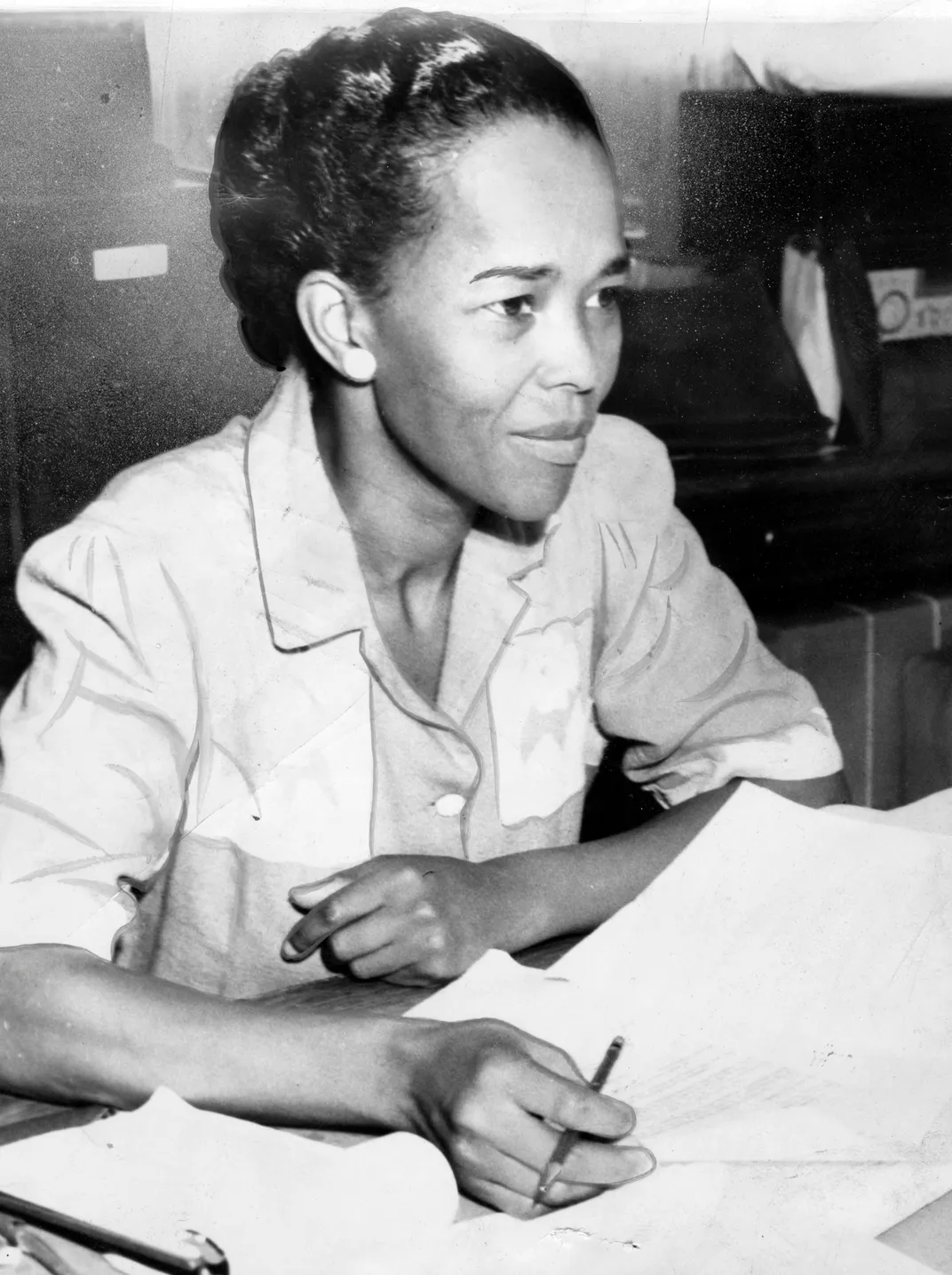
**********
Over time, as the people of the Great Migration embedded themselves in their cities, they aspired to leading roles in civic life. It could not have been imagined in the migration’s early decades that the first black mayors of most major cities in the North and West would not be longtime Northerners, as might have been expected, but rather children of the Great Migration, some having worked the Southern fields themselves.
The man who would become the first black mayor of Los Angeles, Tom Bradley, was born on a cotton plantation in Calvert, Texas, to sharecroppers Crenner and Lee Thomas Bradley. The family migrated to Los Angeles when he was 7 years old. Once there his father abandoned the family, and his mother supported him and his four siblings working as a maid. Bradley grew up on Central Avenue among the growing colony of black arrivals from the South. He became a track star at UCLA and later joined the Los Angeles police force, rising to lieutenant, the highest rank allowed African-Americans in the 1950s.
Seeing limits on his advancement, he went to law school at night, won a seat on the city council, and was elected mayor in 1973, serving five consecutive terms.
His name would become a part of the political lexicon after he ran for governor of California in 1982. Polls had overestimated support for him due to what was believed to be the reluctance of white voters to be truthful with pollsters about their intention to vote for his white opponent, George Deukmejian. To this day, in an election involving a non-white candidate, the discrepancy between polling numbers and final outcomes due to the misleading poll responses of white voters is known as the “Bradley Effect.” In the 1982 election that Bradley had been favored to win, he lost by a single percentage point.
Still, he would describe Los Angeles, the place that drew his family out of Texas, as “the city of hope and opportunity.” He said, “I am a living example of that.”
**********
The story of African-Americans on this soil cannot be told without the Great Migration. For many of them, the 20th century was largely an era of migrating and marching until freedom, by law and in their hearts, was won. Its mission over, the migration ended in the 1970s, when the South had sufficiently changed so that African-Americans were no longer under pressure to leave and were free to live anywhere they chose. From that time, to the current day, a new narrative took hold in popular thought that has seized primarily on geographical census data, gathered every ten years, showing that since 1975 the South has witnessed a net increase of African-Americans, many drawn (like other Americans) to job opportunities and a lower cost of living, but also to the call of their ancestral homeland, enacting what has come to be called a “reverse migration.”
The phrase and phenomenon have captured the attention of demographers and journalists alike who revisit the trend after each new census. One report went so far as to describe it as “an evacuation” from the Northern cities by African-Americans back to the place their forebears had fled. But the demographics are more complex than the narrative often portrayed. While hundreds of thousands of African-Americans have left Northern cities, they have not made a trail to the farms and hamlets where their ancestors may have picked cotton but to the biggest cities of the South—Atlanta, Houston, Dallas—which are now more cosmopolitan and thus more like their Northern counterparts. Many others have not headed South at all but have fanned out to suburbs or smaller cities in the North and West, places like Las Vegas, Columbus, Ohio, or even Ferguson, Missouri. Indeed, in the 40 years since the migration ended, the proportion of the South that is African-American has remained unchanged at about 20 percent—far from the seismic impact of the Great Migration. And so “reverse migration” seems not only an overstatement but misleading, as if relocating to an employer’s Houston office were equivalent to running for one’s life on the Illinois Central.
Richard Wright relocated several times in his quest for other suns, fleeing Mississippi for Memphis and Memphis for Chicago and Chicago for New York, where, living in Greenwich Village, barbers refused to serve him and some restaurants refused to seat him. In 1946, near the height of the Great Migration, he came to the disheartening recognition that, wherever he went, he faced hostility. So he went to France. Similarly, African-Americans today must navigate the social fault lines exposed by the Great Migration and the country’s reactions to it: white flight, police brutality, systemic ills flowing from government policy restricting fair access to safe housing and good schools. In recent years, the North, which never had to confront its own injustices, has moved toward a crisis that seems to have reached a boiling point in our current day: a catalog of videotaped assaults and killings of unarmed black people, from Rodney King in Los Angeles in 1991, Eric Garner in New York in 2014, Philando Castile outside St. Paul, Minnesota, this summer, and beyond.
Thus the eternal question is: Where can African-Americans go? It is the same question their ancestors asked and answered, only to discover upon arriving that the racial caste system was not Southern but American.
And so it was in these places of refuge that Black Lives Matter arose, a largely Northern- and Western-born protest movement against persistent racial discrimination in many forms. It is organic and leaderless like the Great Migration itself, bearing witness to attacks on African-Americans in the unfinished quest for equality. The natural next step in this journey has turned out to be not simply moving to another state or geographic region but moving fully into the mainstream of American life, to be seen in one’s full humanity, to be able to breathe free wherever one lives in America.
From this perspective, the Great Migration has no contemporary geographic equivalent because it was not solely about geography. It was about agency for a people who had been denied it, who had geography as the only tool at their disposal. It was an expression of faith, despite the terrors they had survived, that the country whose wealth had been created by their ancestors’ unpaid labor might do right by them.
We can no more reverse the Great Migration than unsee a painting by Jacob Lawrence, unhear Prince or Coltrane, erase The Piano Lesson, remove Mae Jemison from her spacesuit in science textbooks, delete Beloved. In a short span of time—in some cases, over the course of a single generation—the people of the Great Migration proved the worldview of the enslavers a lie, that the people who were forced into the field and whipped for learning to read could do far more than pick cotton, scrub floors. Perhaps, deep down, the enslavers always knew that. Perhaps that is one reason they worked so hard at such a brutal system of subjugation. The Great Migration was thus a Declaration of Independence. It moved those who had long been invisible not just out of the South but into the light. And a tornado triggered by the wings of a sea gull can never be unwound.
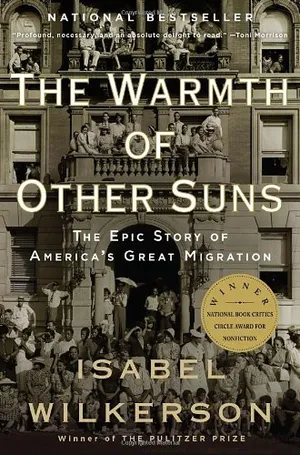
The Warmth of Other Suns: The Epic Story of America's Great Migration
